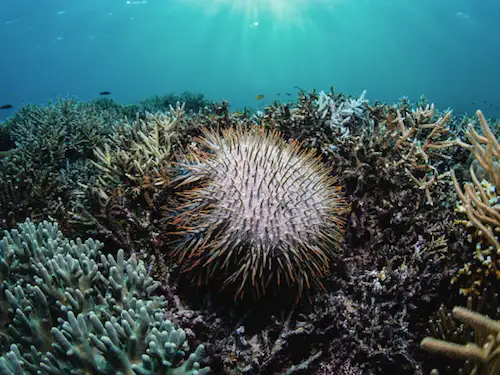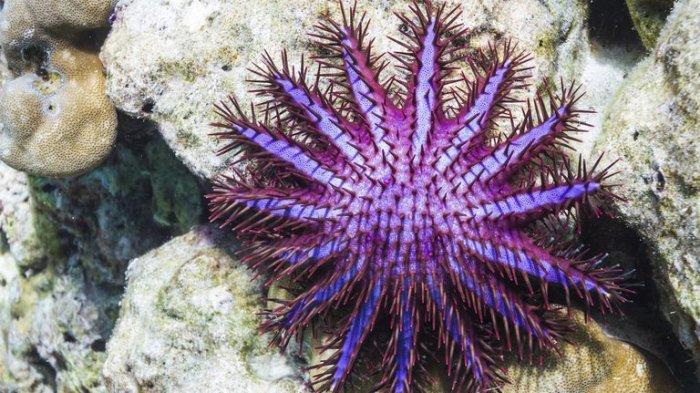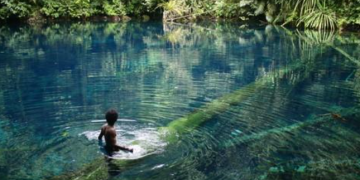PAPUAAROUND — The spiny starfish or Acanthaster Planci is also known as Crown of Thorns (COTs) in English. Also known as sea millipedes or feather millipedes, these fauna are found in coral reef ecosystems.
The spiny starfish is a type of giant starfish with a large number of spines. This organism can damage a fairly large coral reef ecosystem (Yamaguchi, 1986; Pratchett, 2001).
According to the Journal of Tropical Marine Science and Technology (2015), among coral predators, the spiny starfish is the most dangerous predator during an outbreak.
Almost all living corals are preyed upon by these animals. In large numbers (blooms), they cause damage to coral reef ecosystems in the Indo-Pacific region.
Also read : 5 Endemic Fauna of Lorentz Papua National Park
This starfish population explosion was first reported in 1962 on Green Island, Great Barrier Reefs. A similar case was first reported in Japan in 1969.
It is thought to have entered Japanese waters between 1957 and 1958 and began seriously hunting corals from the early 1970s (Journal of Tropical Marine Science and Technology, 2015).
In Indonesia, researchers from the Indonesian Institute of Sciences have reported their presence since the 1970s, for example around Ambon and the Thousand Islands (Lane, 1996).
Both reports indicate that sea star populations are low or few.
Also read : Tips for Safe Travel to Raja Ampat, Check It Out!

Citing research by Azkiya Banata (2015) from the Biology Study Program at Syarif Hidayatullah State Islamic University, spiny sea stars are relatively large. Its diameter reaches 60-70 cm and has a larger stomach than ordinary starfish. The sharp spines on the surface of its body can reach up to 5-6 cm in length and are equipped with tissues containing toxic compounds.
Also read : Birds of Paradise, the Most Beautiful Papua Heritage in the World
This unique animal has many arms, totaling about 15-23. Each arm contains many organs, digestive organs, embryonic sacs (gonads), nervous system, and other organs (Fraser et al., 2003).
On the surface of the body is a large mouth and a series of rigid tubes arranged as a groove on each arm.
At the end of the arm is a highly sensitive structure that is bright pink in color. These are constantly moving sensors that detect chemical signals in the water.
Spiny sea stars have different colors depending on the location where they live. For example, the millipede found in Thailand is red and gray. The same hue is also found in the Great Barrier Reef in the form of green and red spiny sea stars.
In Indonesia, these marine animals are generally gray, purple, green, and blue.
Also read : Hidden Treasure on Raja Ampat’s Batanta Island, Papua











